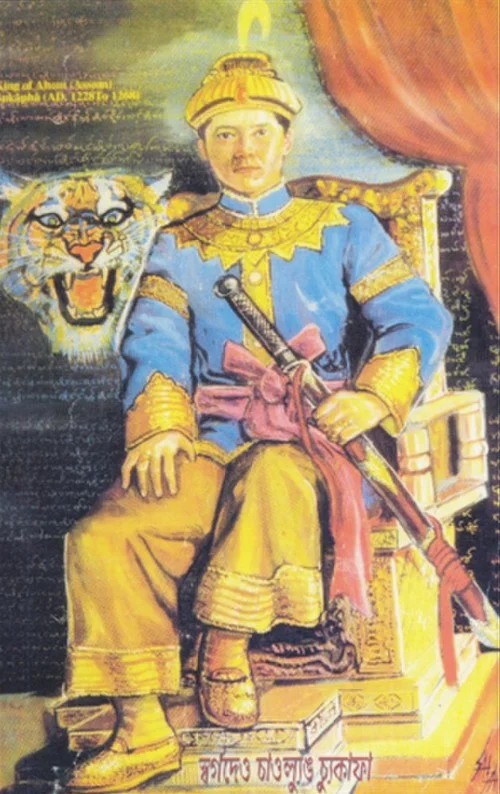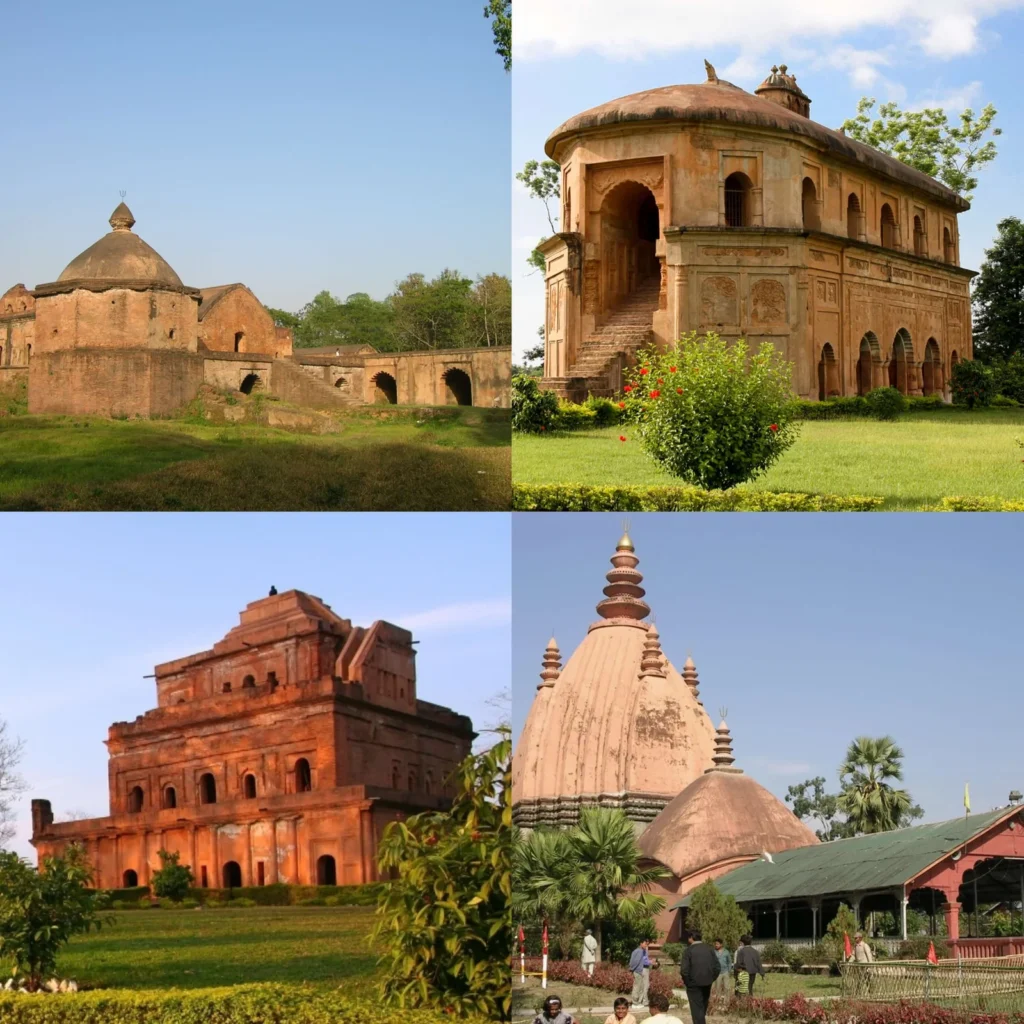The Ahom Dynasty stands as a testament to the rich tapestry of Indian history, with its origins rooted deep in the annals of time. From their humble beginnings to the zenith of their power, the Ahoms carved a legacy that continues to intrigue scholars and enthusiasts alike. Join us as we get into the intricate saga of the Ahom Dynasty.
Table of Contents
Unraveling the Origins

The Ahom Dynasty traces its lineage back to the Tai-Ahom people who migrated from present-day Yunnan province in China to the fertile plains of Assam in northeastern India. Led by their legendary founder, Sukaphaa, the Ahoms embarked on a journey fraught with challenges, ultimately establishing their capital at Charaideo in 1253 AD.
The Ascendancy of Power
Under the leadership of successive Ahom kings, the dynasty gradually expanded its territory, consolidating its hold over the region. The reign of Swargadeo Rudra Singha marked a golden age for the Ahoms, characterized by remarkable administrative reforms and military prowess. It was during this period that the Ahom Dynasty reached its zenith, with its influence extending far beyond the borders of Assam.
Governance and Administrative Brilliance
Central to the success of the Ahom Dynasty was its sophisticated administrative machinery. The kingdom was divided into autonomous regions known as “sadiyakhowa gohains” or “seven divisions,” each governed by a hereditary chief. This decentralized structure not only ensured efficient governance but also fostered a sense of local autonomy among the populace.
Cultural Renaissance and Architectural Marvels

The Ahom Dynasty was not only a powerhouse in terms of military and political might but also a patron of art, literature, and architecture. Their contributions to Assamese culture are evident in the majestic temples, palaces, and monuments dotting the landscape of modern-day Assam. The exquisite craftsmanship of the Ahom artisans continues to mesmerize visitors to this day.
The Tumultuous Decline
However, like all great empires, the Ahom Dynasty faced its share of challenges. External threats from the Mughals and internal strife hastened the decline of the once-mighty kingdom. The Battle of Saraighat, led by the valiant Lachit Borphukan, stands as a poignant chapter in Ahom history, symbolizing the last stand of a proud dynasty against overwhelming odds.
Legacy and Enduring Influence
Despite their eventual downfall, the Ahom Dynasty’s legacy lives on in the hearts and minds of the Assamese people. Their resilience in the face of adversity, their commitment to justice and fairness, and their cultural vibrancy continue to inspire successive generations. Today, monuments such as the Rang Ghar and Kareng Ghar serve as tangible reminders of the Ahom Dynasty’s enduring influence.
Ahom Dynasty: A Lachit Borphukan Perspective

No discussion of the Ahom Dynasty would be complete without paying homage to one of its greatest heroes, Lachit Borphukan. Renowned for his indomitable spirit and unwavering courage, Lachit Borphukan epitomizes the ethos of the Ahom Dynasty. His leadership during the Battle of Saraighat remains a shining example of bravery and sacrifice, immortalizing him in the annals of Indian history.
Exploring Assam: Land of Diversity

Beyond its association with the Ahom Dynasty, Assam beckons travelers with its breathtaking landscapes, vibrant culture, and warm hospitality. From the lush tea gardens of Jorhat to the mystical beauty of Kaziranga National Park, Assam offers a cornucopia of experiences waiting to be discovered.
FAQs
Q: What led to the decline of the Ahom Dynasty? A: Several factors contributed to the decline of the Ahom Dynasty, including external invasions, internal conflicts, and changing geopolitical dynamics.
Q: What is the significance of Lachit Borphukan in Ahom history? A: Lachit Borphukan played a pivotal role in defending the Ahom kingdom from Mughal incursions during the Battle of Saraighat, showcasing unparalleled valor and leadership.
Q: How can I learn more about the Ahom Dynasty? A: Explore the rich history of the Ahom Dynasty through historical texts, museum exhibits, and guided tours of Assam’s heritage sites.
Conclusion

In the grand tapestry of Indian history, the Ahom Dynasty occupies a unique place, its rise and fall a testament to the ebb and flow of empires. From the verdant plains of Assam to the hallowed halls of Charaideo, the legacy of the Ahom Dynasty endures, a timeless reminder of the resilience and fortitude of the human spirit.












